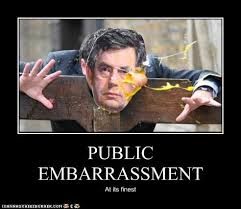The purpose of this guidance is to assist and provide recommendations to industry and FDA staff regarding the use, content, and circumstances for issuance of public warnings and public notifications for firm-initiated or FDA-requested recalls under 21 CFR Part 7, Subpart C – Recalls (Including Product Corrections) – Guidance on Policy, Procedures, and Industry Responsibilities.
 The guidance also discusses what information should be included in a public warning, as well as the parties responsible for issuing it.
The guidance also discusses what information should be included in a public warning, as well as the parties responsible for issuing it.
It represents FDA’s current thinking on public warning and notification of recalls under 21 CFR Part 7. 1 This guidance has been prepared by the Office of Strategic Planning and Operational Policy (OSPOP), in the Office of Regulatory Affairs (ORA), in cooperation with the Center for Biologics Evaluation and Research (CBER), the Center for Drug Evaluation and Research (CDER), the Center for Devices and Radiological Health (CDRH), the Center for Veterinary Medicine (CVM), the Center for Tobacco Products (CTP), and the Center for Food Safety and Applied Nutrition (CFSAN) at the U.S. Food and Drug Administration.
This draft guidance, when finalized, will represent the current thinking of the Food and Drug Administration (FDA or Agency) on this topic. It does not establish any rights for any person and is not binding on FDA or the public. You can use an alternative approach if it satisfies the requirements of the applicable statutes and regulations. To discuss an alternative approach, contact the FDA staff responsible for this guidance as listed on the title page.
 This guidance applies to voluntary recalls of products subject to FDA’s jurisdiction, including any food, drug, and device intended for human or animal use, any cosmetic and biologic intended for human use, any tobacco product intended for human use, and any item subject to a quarantine regulation under part 21 Part 1240. However, it does not apply to radiation emitting electronics which are governed by 21 CFR Part 1003 and 1004.
This guidance applies to voluntary recalls of products subject to FDA’s jurisdiction, including any food, drug, and device intended for human or animal use, any cosmetic and biologic intended for human use, any tobacco product intended for human use, and any item subject to a quarantine regulation under part 21 Part 1240. However, it does not apply to radiation emitting electronics which are governed by 21 CFR Part 1003 and 1004.
In general, FDA’s guidance documents do not establish legally enforceable responsibilities. Instead, guidances describe the Agency’s current thinking on a topic and should be viewed only as recommendations, unless specific regulatory or statutory requirements are cited. The use of the word should in Agency guidances means that something is suggested or recommended, but not required.
Public warning and notification recalls under 21 CFR part 7, subpart C guidance for industry and FDA staff, 17 January 2018
FDA
https://www.fda.gov/downloads/Safety/Recalls/IndustryGuidance/UCM592851.pdf
Going public: Early disclosure of food risks for the benefit of public health
Mar.17
NEHA, Volume 79.7, Pages 8-14
Benjamin Chapman, Maria Sol Erdozaim, Douglas Powell
http://www.neha.org/node/58904
Often during an outbreak of foodborne illness, there are health officials who have data indicating that there is a risk prior to notifying the public. During the lag period between the first public health signal and some release of public information, there are decision makers who are weighing evidence with the impacts of going public. Multiple agencies and analysts have lamented that there is not a common playbook or decision tree for how public health agencies determine what information to release and when. Regularly, health authorities suggest that how and when public information is released is evaluated on a case-by-case basis without sharing the steps and criteria used to make decisions. Information provision on its own is not enough. Risk communication, to be effective and grounded in behavior theory, should provide control measure options for risk management decisions. There is no indication in the literature that consumers benefit from paternalistic protection decisions to guard against information overload. A review of the risk communication literature related to outbreaks, as well as case studies of actual incidents, are explored and a blueprint for health authorities to follow is provided.
